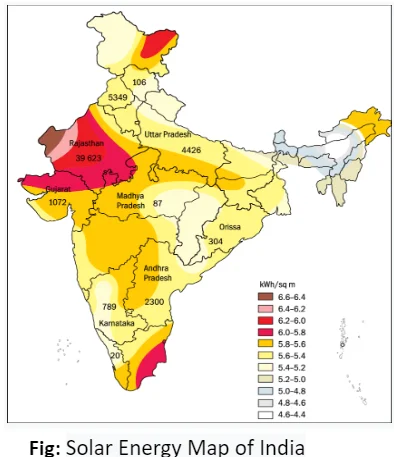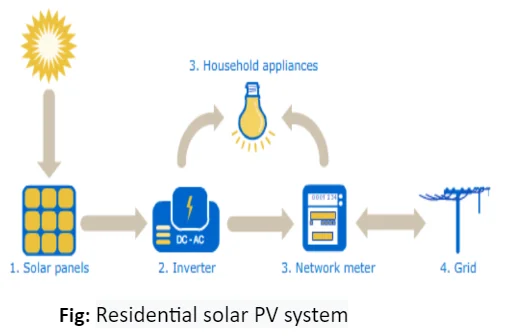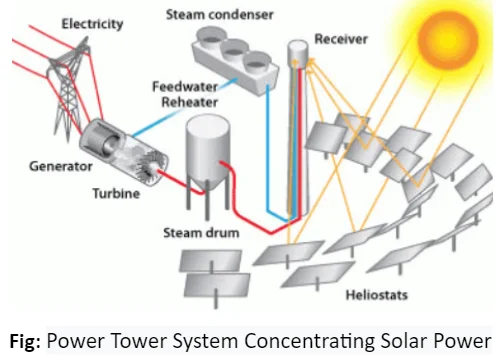Solar energy, derived from the sun’s rays, holds immense potential for India’s energy needs. With abundant sunlight and progressive policies, India is rapidly embracing solar power to meet its growing energy demands. From rooftop systems to large-scale solar parks, various initiatives are underway to harness solar energy across the nation.
Solar Power Revolution: Harnessing Benefits and Advancements in India
Solar Energy Benefits and Progress in India
- The Sun has been worshiped for ages for giving life to our planet, and in modern times, especially in India, we’ve learned to harness its energy, converting it into electricity or heat through solar energy. [UPSC 2020]
- India gets a lot of sunlight – about 5,000 trillion kWh per year.
- Solar power is scalable in India and can be quickly added.

- Solar energy can be used in many ways, like for power, heating, and cooling.
- Using solar energy makes sense for security because it’s always available.
- Even capturing a small amount of sunlight could power the whole country.
- Solar energy has helped Indian villages by providing clean energy for cooking and lighting.
- This helps rural women and girls who no longer have to collect firewood or cook in smoky kitchens.
- It also reduces the risk of lung and eye diseases.
- Solar energy creates jobs and improves living standards in villages.
- It’s also becoming an important part of India’s overall energy plan.
Types of Solar Energy Systems in India:
- Photovoltaic (PV) Systems:
- These systems convert sunlight directly into electricity using solar cells. They are widely used for both residential and commercial purposes.

- Working of PV: In PV systems, photovoltaic cells, typically made of semiconductor materials like silicon, absorb sunlight.
- This sunlight dislodges electrons in the semiconductor material, creating a flow of electric current.
- This process is known as the photovoltaic effect.
- Concentrated Solar Power (CSP): It uses mirrors or lenses to concentrate a large area of sunlight onto a small area, generating heat that drives an engine connected to an electrical power generator.

- Working of CSP: CSP systems concentrate sunlight using mirrors or lenses onto a small, targeted area.
- This concentrated solar energy is then used to heat a fluid, which produces steam.
- The steam drives a turbine, generating electricity in a manner similar to traditional power plants.
Difference Between Solar PV Panels and Solar Thermal Panels
- Solar PV (photovoltaic) panels convert sunlight directly into electricity using photovoltaic cells, primarily for electricity generation in residential and commercial settings.
- In contrast, solar thermal panels absorb sunlight to heat a fluid, which is then used for heating purposes such as domestic hot water and space heating. While PV panels are focused on electrical energy production, solar thermal panels are dedicated to providing thermal energy.
|
- Solar Rooftop Systems: They are installed on the rooftops of residential or commercial buildings. These systems generate electricity for onsite use and can feed excess power back to the grid.
- Solar Parks: These are large-scale solar installations, often developed in collaboration with state governments or big private firms.
India’s Solar Potential: Progress, Policies, and Pathways
The National Institute of Solar Energy (NISE) estimates India’s solar potential at around 748 GW, assuming 3% of wasteland is covered by solar panels.
- Solar energy is a key focus of India’s National Action Plan on Climate Change, with the National Solar Mission (NSM) being a major part of it.
- National Solar Mission (NSM): launched on January 11th, 2010, aims to promote sustainable growth and address energy security challenges.
- It’s also a significant contribution to global efforts against climate change.
- The mission’s goal is to make India a global leader in solar energy by spreading solar technology across the country.
- This aligns with India’s commitment to have 50% of its electricity from non-fossil fuel sources and reduce emission intensity by 45% by 2030.
- To meet these goals, the Government of India has introduced various schemes to encourage solar power generation, such as the Solar Park Scheme, VGF Schemes, CPSU Scheme, Defence Scheme, Canal Bank & Canal Top Scheme, Bundling Scheme, and Grid Connected Solar Rooftop Scheme.
- Installed Capacity: India has a solar energy target of 280 GW by 2030. As of August 2023, India’s solar power installed capacity was 71.61 GWAC (Gigawatt Alternating Current).
- Areas of Presence: Solar energy projects are spread across various states in India. The ranking of states according to current solar energy installations is Rajasthan (17.8 GW), Gujarat (10.13 GW), Karnataka (9.05 GW), Tamil Nadu (6.8 GW), and Maharashtra (4.8 GW).
Conclusion
India’s journey towards solar energy expansion is marked by promising progress and ambitious targets.
- Through initiatives like the National Solar Mission and various schemes, India aims to emerge as a global leader in solar energy, contributing significantly to sustainable development and combating climate change.
- With continued efforts and investments, the future of solar energy in India looks bright, promising a cleaner and more sustainable energy landscape.
![]() June 14, 2024
June 14, 2024
![]() 1681
1681
![]() 0
0


